Pak Choi is grown for its tasty leaves which are superb when added to stir fries and salads.
The taste is similar to that of mild cabbage and spinach and is a popular addition to many oriental dishes.
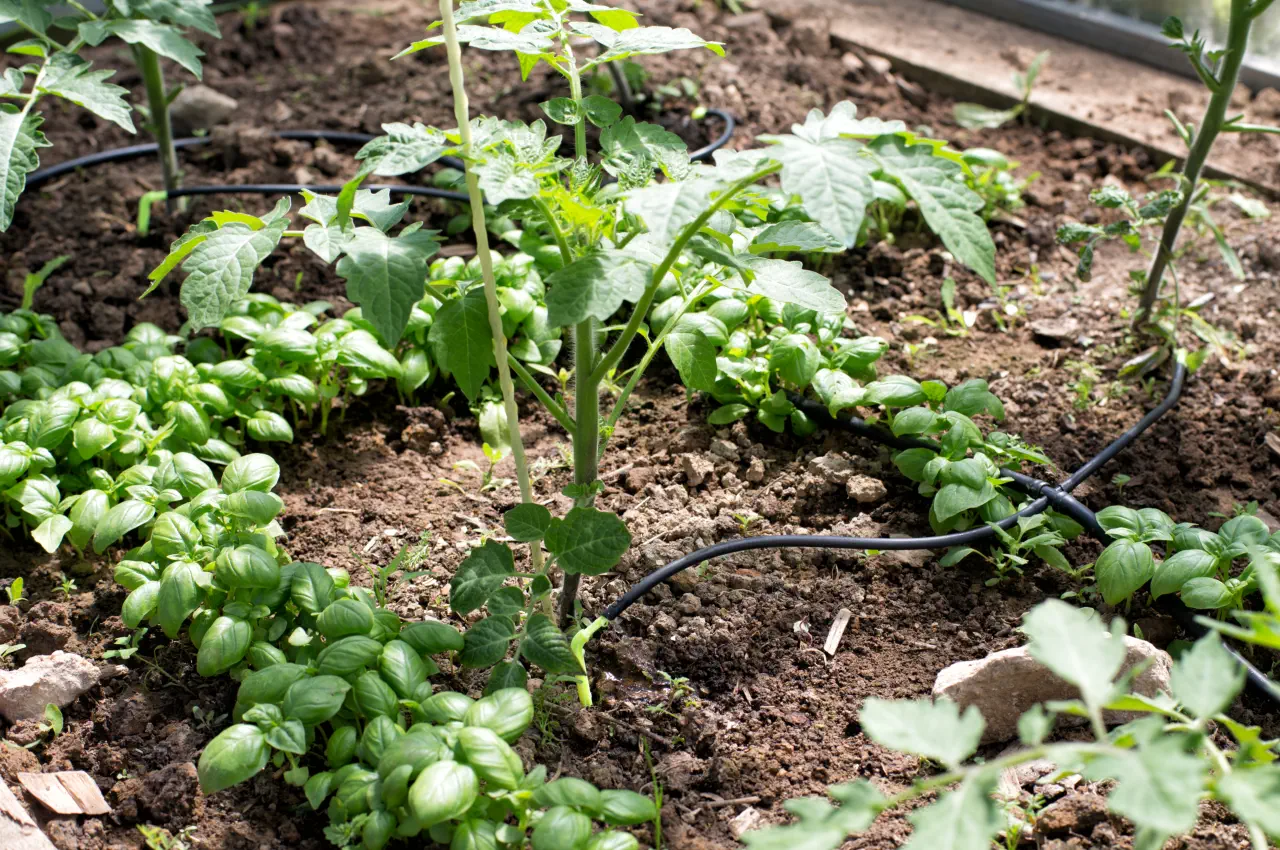
Basil (Ocimum basilicum) is a popular herb known for its aromatic leaves and versatile culinary uses. Whether you want to grow basil indoors on a windowsill, in a greehouse, or outdoors in the garden, following the right steps will help you grow some nice healthy and flavourful basil plants.
The ideal time to sow basil seeds indoors is between March and August, or about 6-8 weeks before the last expected frost in your area. This allows you to transplant the seedlings outdoors when the weather becomes warmer and all danger of frost has passed. Alternatively, you can sow the seeds directly outdoors from June onwards in a sunny spot.
To start, fill trays or small pots with damp compost, and then sow the basil seeds lightly on the surface. Cover the seeds with a fine sifted layer of compost, about 1/4 inch deep. Place the trays or pots on a warm windowsill or in a greenhouse with ample sunlight. Ensure that the compost remains moist but not waterlogged during the germination process.
Seedlings of Basil Dark Red Opal Seedlings of Basil Sweet Genovese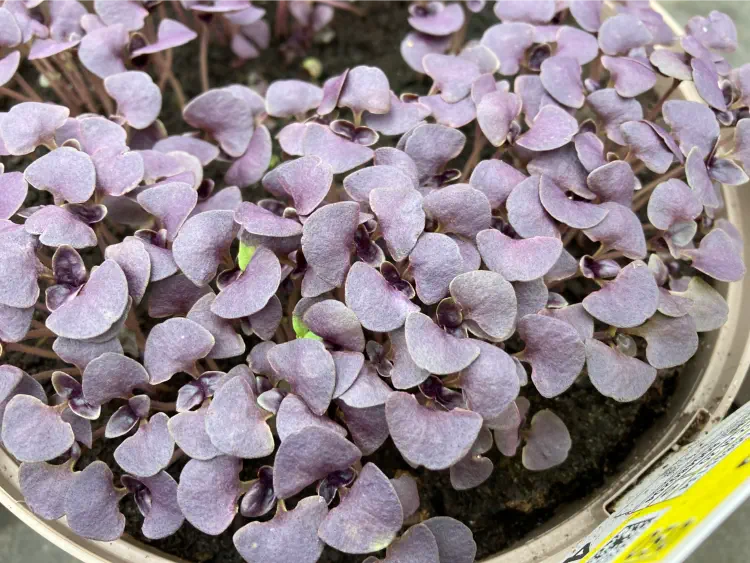
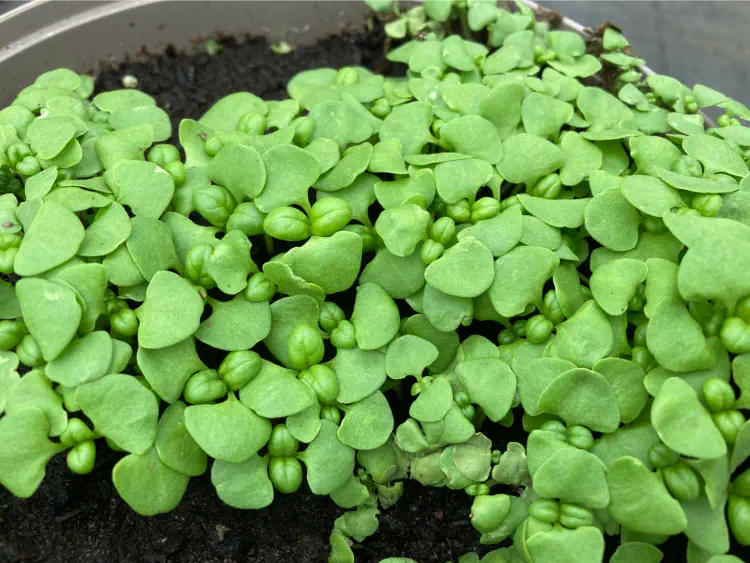
Germination typically takes 7-10 days, after which you will see the seedlings emerge. Once the seedlings have developed a few sets of true leaves, they are ready for transplanting.
Red Purple Leaves, excellent for seasoning.....
Average Contents : 500 seeds
Unique variety with bright green serrated.....
Average Contents : 250 seeds
Genovese is renowned for its fragrance and is the traditional basil used in pesto.....
Average Contents : 1g (approx 600) seeds
Growing basil in pots provides the advantage of mobility, allowing you to move the plants to sunnier spots throughout the day. Choose pots with good drainage holes and fill them with a well-draining potting mix.
Place the pots in a sunny location, preferably receiving at least 6-8 hours of direct sunlight daily. Basil loves warmth, so try to keep the temperature around 70-90°F (20-32°C). Water the plants regularly to prevent the soil from drying out, but be cautious not to overwater as this can lead to root rot.
Fertilize the basil plants every 2-3 weeks with a liquid feed to promote healthy growth and robust foliage.
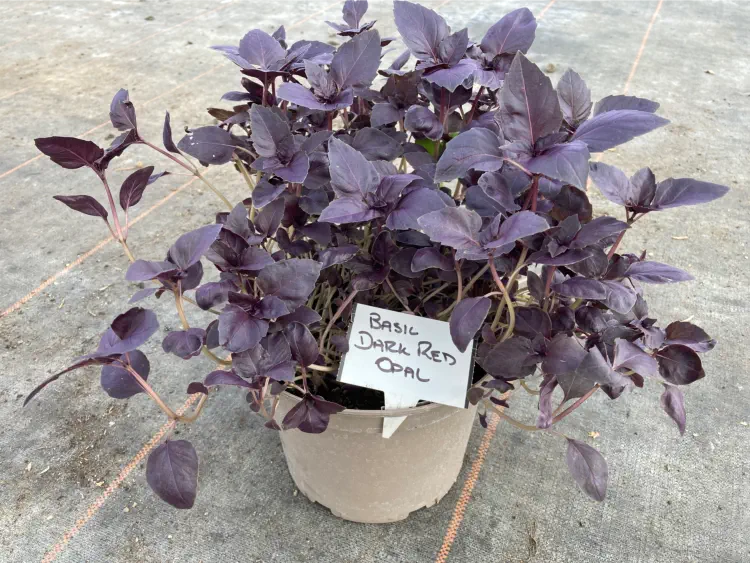
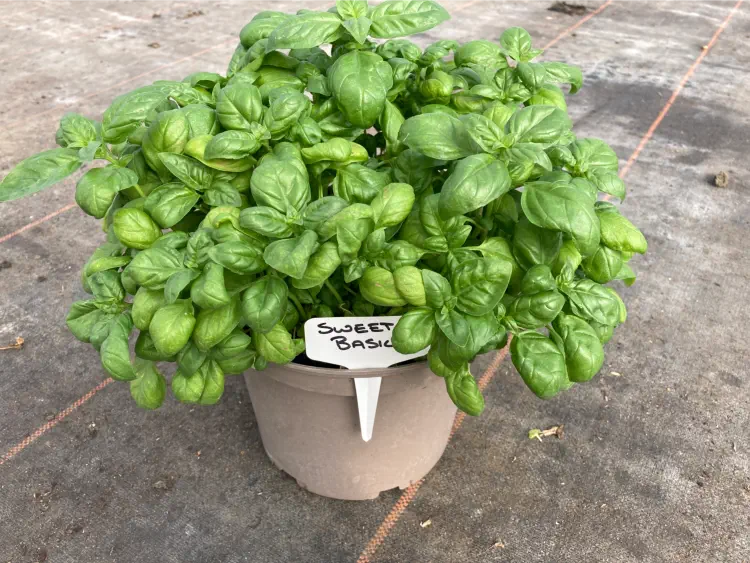
If you prefer to grow basil in an outdoor bed or a designated herb garden, ensure the soil is well-draining. Choose a sunny spot for planting, as basil thrives in full sunlight.
When the basil seedlings are around 6 inches tall and have developed several sets of leaves, transplant them into the outdoor bed, spacing them about 30cm (12 inches) apart. Water the plants thoroughly after transplanting and keep the soil consistently moist.
Applying a mulch around the base of the growing plants can help retain soil moisture and suppress weed growth. Additionally, regular feeding with liquid fertilizer every 2-3 weeks will provide the necessary nutrients for healthy growth.
When watering basil plants, take care not to splash water on the delicate leaves. Avoid using insecticides or fungicides on the basil, as these chemicals can taint the leaves and make them unfit for consumption.
Remove any weeds that appear around the base of the plants as soon as you notice them, as weeds can compete with basil for nutrients and water.
Basil plants are susceptible to pests such as slugs and aphids. During late spring and early summer, slugs can be particularly troublesome. Consider using natural slug control remedies like beer traps or crushed eggshells to protect your basil from these pests.
For aphid infestations, be vigilant and remove the insects by spraying the plants with a jet of water or by introducing natural predators like ladybird larvae, which feed on aphids.
To encourage continuous growth, regularly harvest basil leaves by pinching off the tips of the stems. This will prevent the plants from flowering and promote more leaf growth. If you notice any flower buds forming, promptly remove them.
Fresh basil leaves can be used immediately or frozen for later use. To dry basil leaves for long-term storage, cut the whole plants at the base of the stem when the leaves are at their peak flavor and aroma. Hang the stems upside down in a dry, warm place with good airflow. Once the leaves have fully dried, crumble them and store them in a dry, airtight jar for future use.
In conclusion, growing basil from seeds can be a rewarding and enjoyable experience. By following these guidelines on sowing herb seeds, caring for the plants, and preventing pests, you can ensure a bountiful harvest of fresh, aromatic basil leaves to enhance your culinary delights throughout the growing season and beyond. Happy gardening!
Share your Basil growing hints and tips? Let us know with a comment below....
All blog content on this page is copyright of SimplySeed and is not to be reproduced without prior written permission. ©